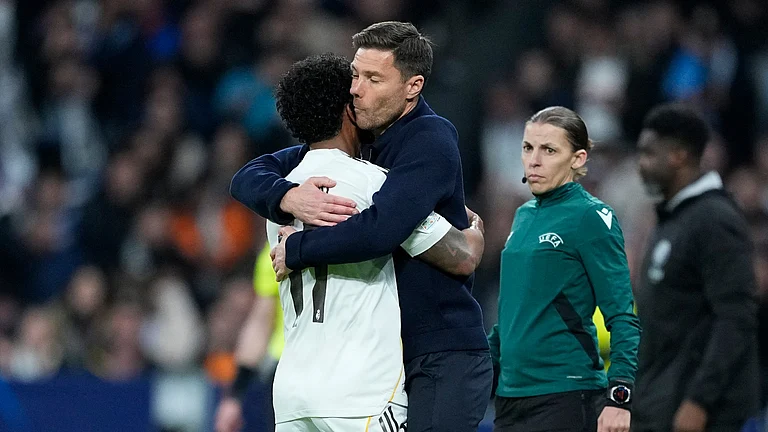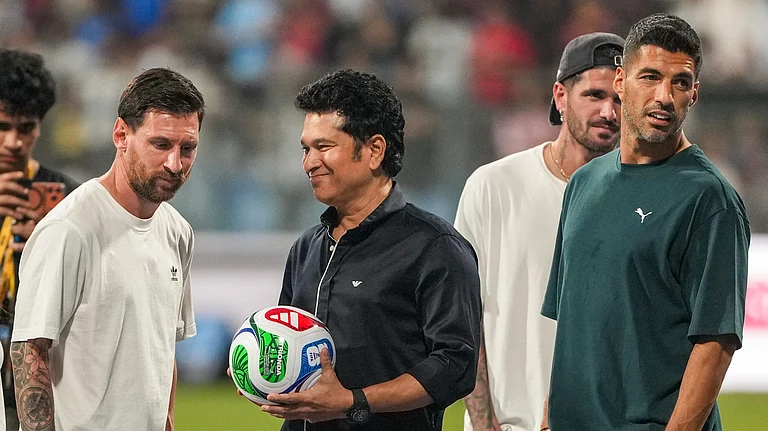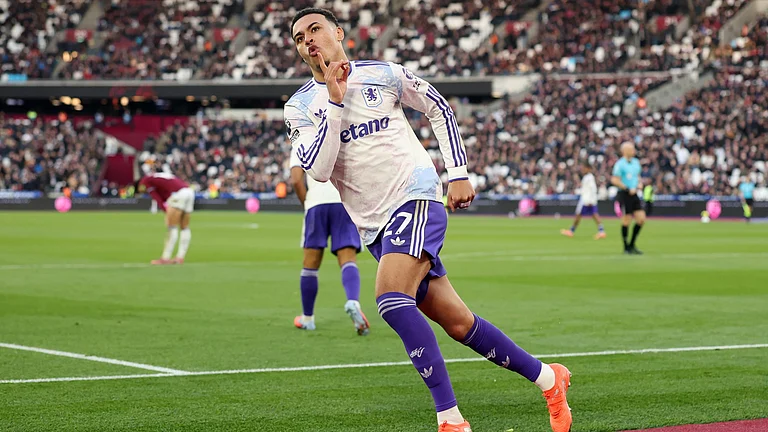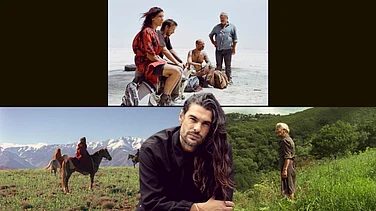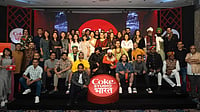In a bid to create an inclusive world through the work of tech and art, leading Indian-Canadian production designer Rhea Solanki is currently working on production design for select social message-focused projects in Bollywood. She recently led the production design for the upcoming Sundance World Premiere ‘We Were Meant To’ and ‘Amina’ which premiered at Tribeca Film Festival. Being an immigrant and a person of color, Rhea believes in taking up projects that showcase the greater causes of society.
Rhea has been lauded for her in-depth visual expertise and set design excellence given that both the aforementioned films are being presented at Oscar-qualifying film festivals. Interestingly, she garnered great appreciation in 2022 for her most pivotal project, Dahmer – Monster: The Jeffrey Dahmer Story, which is only the third web series in history to cross over 1 Bn hours of being streamed within its first 60 days on Netflix. It is currently the third most popular English language show of all time for the streamer.
In this interview with Outlook, Rhea talks about why she is often part of storytelling that centers around social change, the difference between Hollywood and Bollywood ways of looking at Production Design as a part of a project, and more.
Excerpts from the interview:
Q. What inspired you to think about Production Design as your career? What would you suggest the new aspirants consider before zeroing down on Production Design?
I’ve always been fascinated with stories and art and was always creating worlds in my head for the books that I was reading. Finding production design was unexpected as it was the intersection of both things that I loved and was passionate about.
Over the last ten years, I’ve designed for theatre, films, television, exhibits, and more. Having the chance to experiment with different mediums has been very valuable to me in my career. And also, being able to learn from really skilled and talented people like the production designer of Dahmer - Matthew.
Early on the thing, what all aspirants should understand is that while you are designing a world and place you’re also responsible for designing the emotions. The production design is about creating intimacy between the character and the place. Every single part of the set must feel authentic to the characters and story.
I would suggest all aspirants analyze their passion for storytelling and art and how they come together. Filmmaking in general can be very cumbersome if one is not passionate about it. The world is a global village today, and so I would suggest all aspirants gather global experience for being relevant to wide audiences across the globe. Always remember that it’s okay to make mistakes, that’s how you learn!
Q. With the projects that you worked on recently - ‘We Were Meant To’ and ‘Amina’ premiering at celebrated film festivals, what did it take to get there? What were the challenges and your strategy to get over them?
I’m so ecstatic by how well-received both projects were. We Were Meant To not only premiered at Sundance Film Festival but was also nominated for the Grand Jury award there. The film, set in a world where black men have wings, shows the journey of the main character, Akil’s first flight. I wanted to create a rich world that was reflective of our current world with the addition of wings. The director and I had a lot of conversations about how the world should be relatable and similar to how most people grew up but also have wings as a natural part. I designed the entire comic book series for this purpose, to show how rich the history of the wings in this world is and how Akil is inspired to take flight even without his wings. I added many other little details like the no-fly zone signs and caution tape as well as creating the comic book posters which I hand drew and digitally coloured. Another challenge I faced was in envisioning and creating the wings. We created multiple prototypes before working with the special effects house.
‘Amina’ premiering at Tribeca Film Festival is the journey of navigating grief and finding happiness. The biggest challenge was that I had to create the surface of the moon and a space shuttle as our main characters were astronauts. We worked with different soil and rock samples to find the best ‘moon’ scape. And we built the space shuttle cockpit basis the design adopted from multiple pictures from NASA and other space agencies.
Overall, getting to big festivals like Sundance requires a lot of planning, strategy, research and iterations. Design is always evolving, even on set and one must be nimble in overcoming challenges.
Q. Netflix’s Dahmer is yet another remarkable project that you worked on. Could you share your experience of how international production design projects feel? Any differences that you can measure with that in the Indian M&E industry?
Dahmer is a very special project. Not only is it based on a true story which requires a lot of research and attention to detail, but it was also a project aimed at a very wide audience and wanted to shine the light on a different, more nuanced side of the events. The project required us to create something that could be relatable to people in multiple countries.
Working in India, I find that I’m usually more focused on just the Indian audience. That causes the focus on visuals to be very different. Hollywood is very collaborative in how the cinematographer, production designer, director and visual effects team work together.
The biggest differences for me are how much attention to detail there is and the focus that Hollywood has on creating the best possible designs. They also allocate larger budgets for it. It’s a very collaborative effort with the cinematographer, designer and visual effects working together to achieve the vision.
The Indian M&E industry is also able to make content for a much lower price and provide it to people for lower prices. They have lesser revenue due to this - but allow access to the whole country.
Q. What is the key thing that you consider in your projects? Why is it important to you?
The key to all of my work is the story - having watched Hollywood and Bollywood movies all my life. I’ve always had a keen awareness of how the stories we watch can shape our thoughts and opinions. Having lived in both India and Canada, as a ‘person of colour’ in Hollywood my work is often centred around social messages and social change.
While selecting projects I always analyze the story and the design. Often I pick the story that resonates with me most and that I feel will connect with the audience or is a message worth sharing. Or I will pick the design I feel will challenge me most and help me grow as a designer.
In the future, I’m hoping to explore more innovative projects that explore the potential of storytelling within the metaverse and beyond, and pioneer new cinematic techniques for filmmaking.
Q. The Media & Entertainment Industry has been continuously evolving with modern tech, how is production design getting impacted by the same?
Production Design is one of the most impacted parts of the industry. We are constantly evolving and changing and improving with new technology. We’re seeing more and more digital sets being built and software like Unreal being used to create sets rather than the traditional building process. We are also seeing an increase in digitization of the industry and having virtual art departments.
For production design, new technology also provides exciting ways to increase the quality of what audiences see on stage. We’re also seeing the rise of new types of content platforms - like the metaverse. I think production design is evolving to be more digital and experiential. With even more epic spectacles on screen nowadays, just take for example the latest Avatar movie or the new Lord of the Rings TV Show.
We are already seeing the usage of blockchain in the production of films especially in data storage, data organization and finances. It is being used in how art department store their digital files and share information within the department.
Q. Does the industry-academia gap exist for production design too? What are the existing efforts or prospective suggestions to help bridge the gap?
Definitely. I think filmmaking is one of those fields where one needs experience within the industry making films to understand the details of production design. One of the big things that most institutions are doing now is encouraging students to make more films. That’s the most important thing! Even if it’s on your phone - going out and creating something teaches you a lot. There are always last-minute problems on set and you always have to be able to creatively solve the problem. Another thing that needs to be added is more technical knowledge. Given how technology is evolving the industry, all new students should be learning and experimenting in contemporary ways that the industry is following.
Q. Can you shed some light on your recent successful projects and your upcoming stint with new projects?
I’m proud of ‘We Were Meant To’ which just had its world premiere at Sundance and its Los Angeles premiere at the Pan African Film Festival. My TV Show Unprisoned will be coming out on HULU/ Disney on March 10th. I’m currently working on a new OTT series in India. Dahmer will also be having 2 more seasons, so the production design projects will begin soon too.







